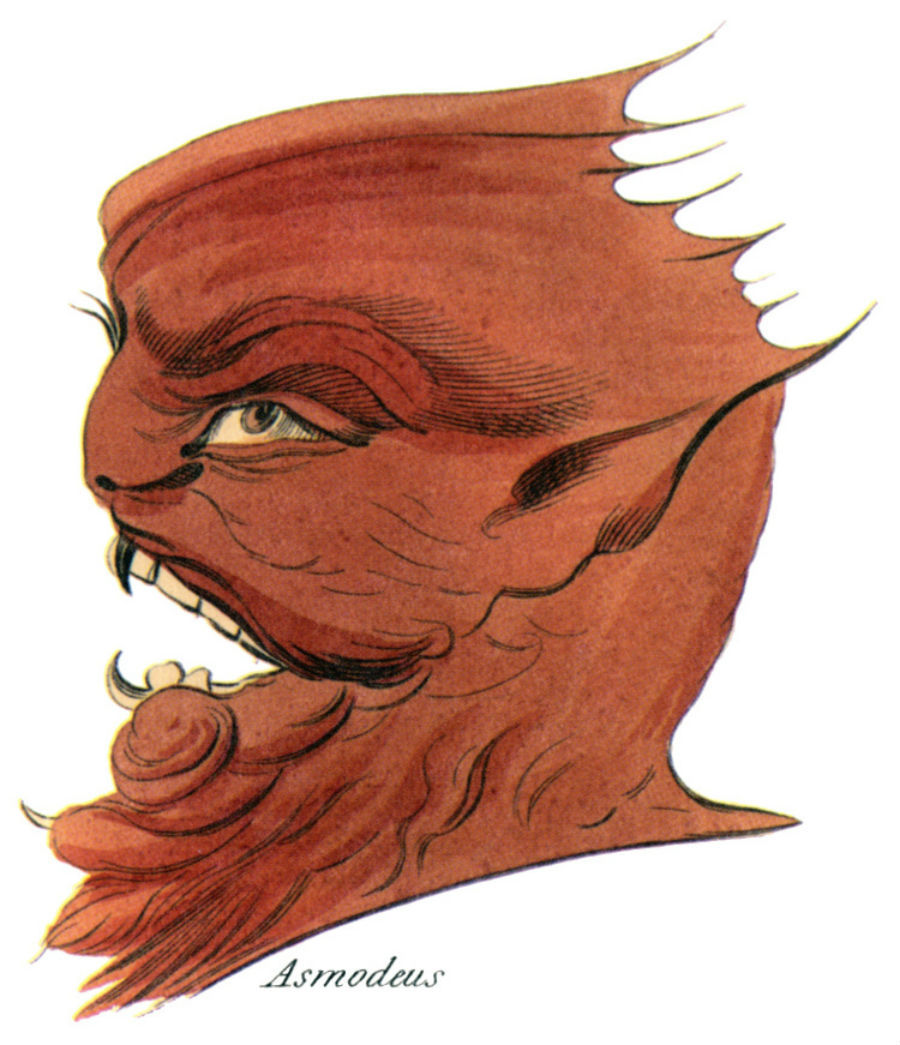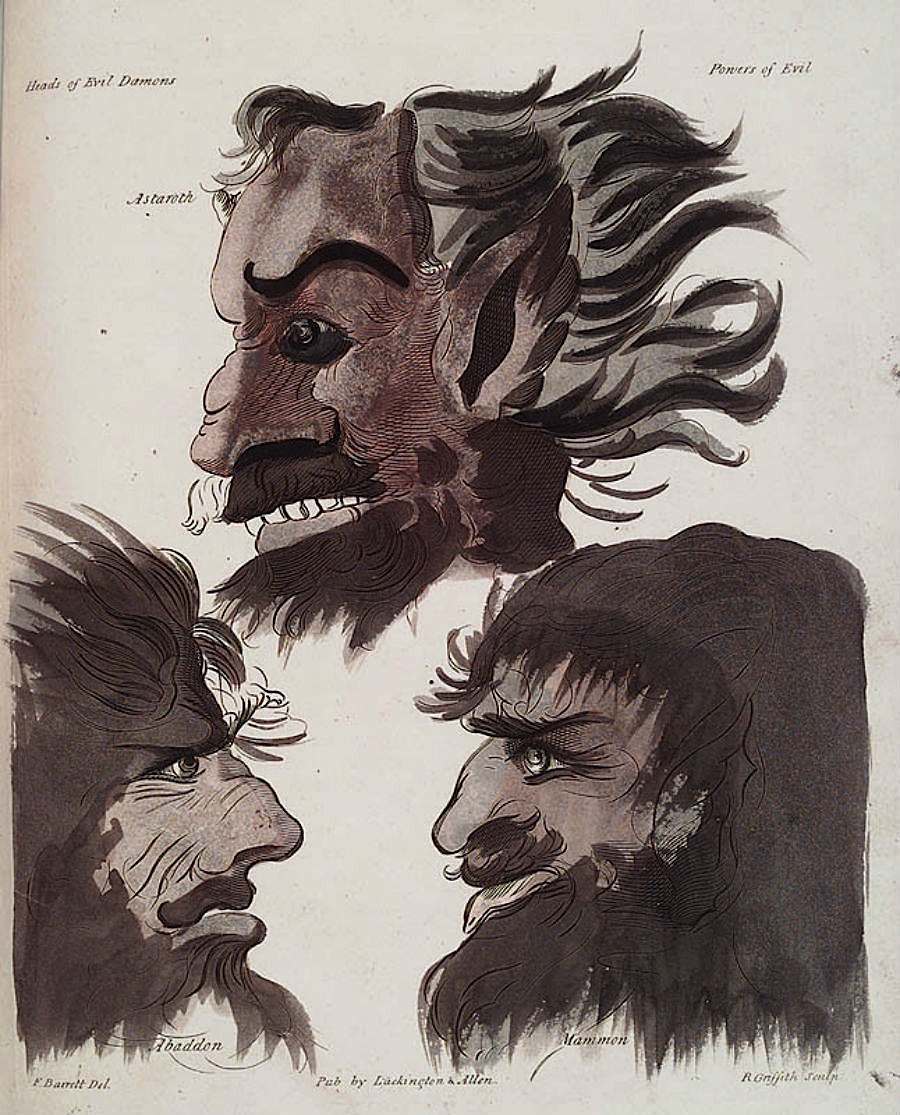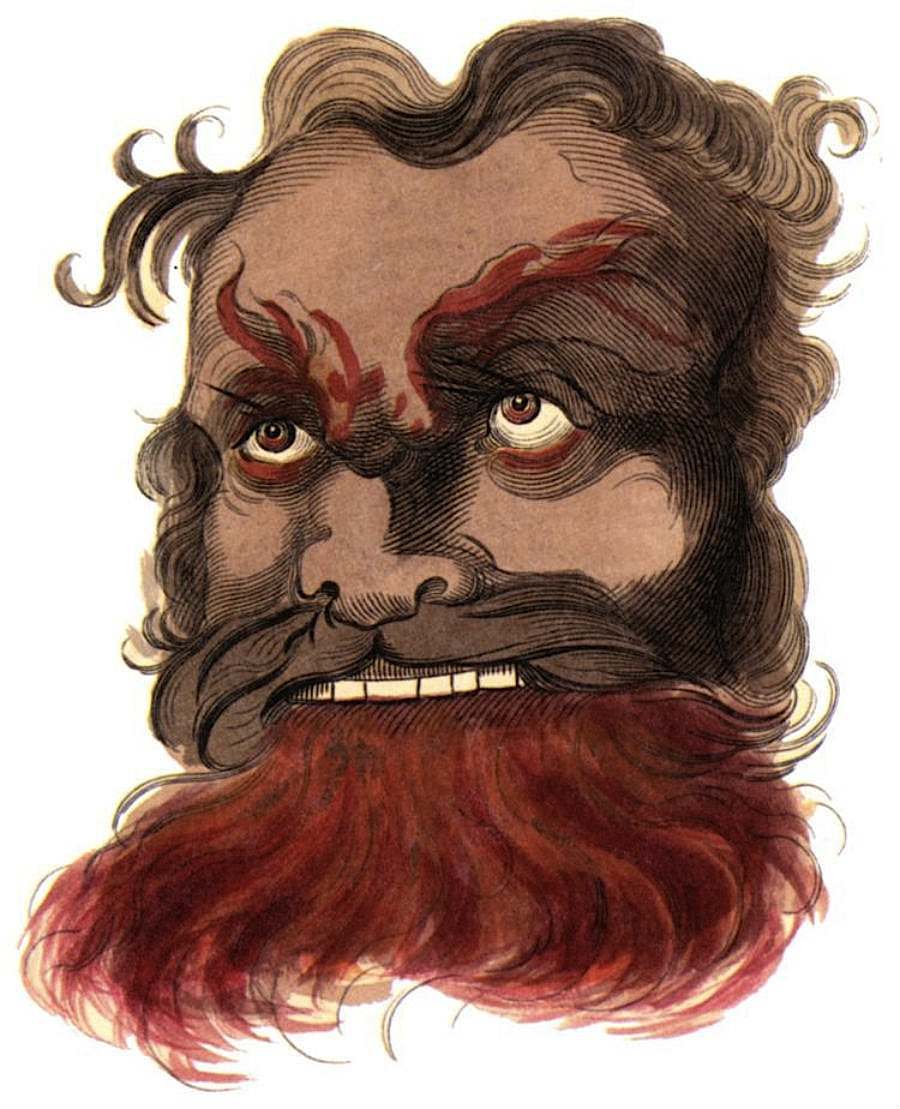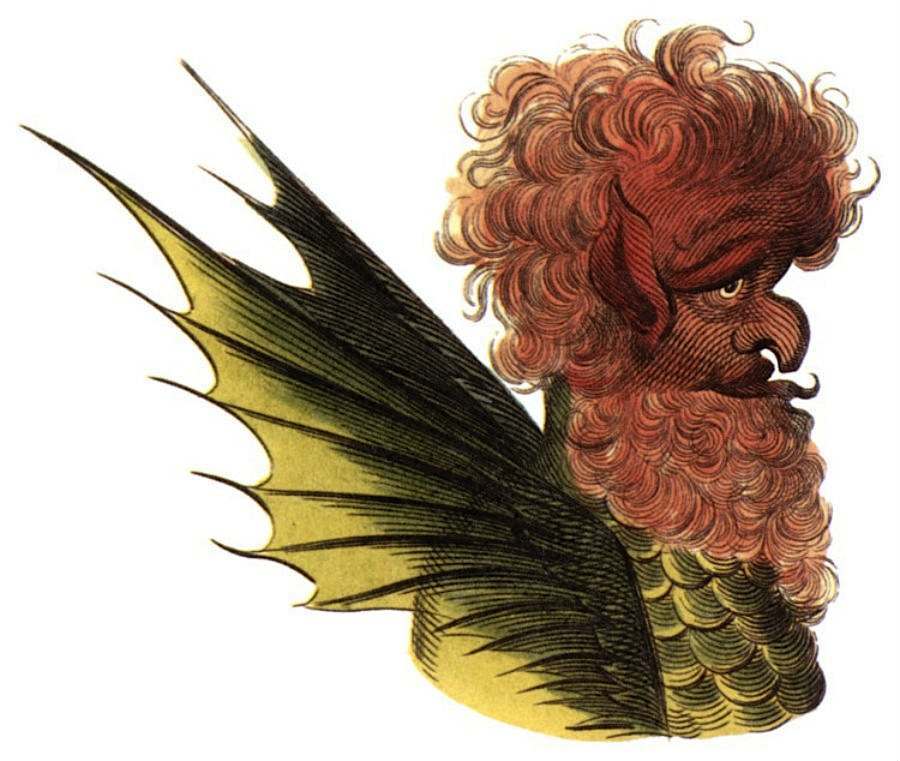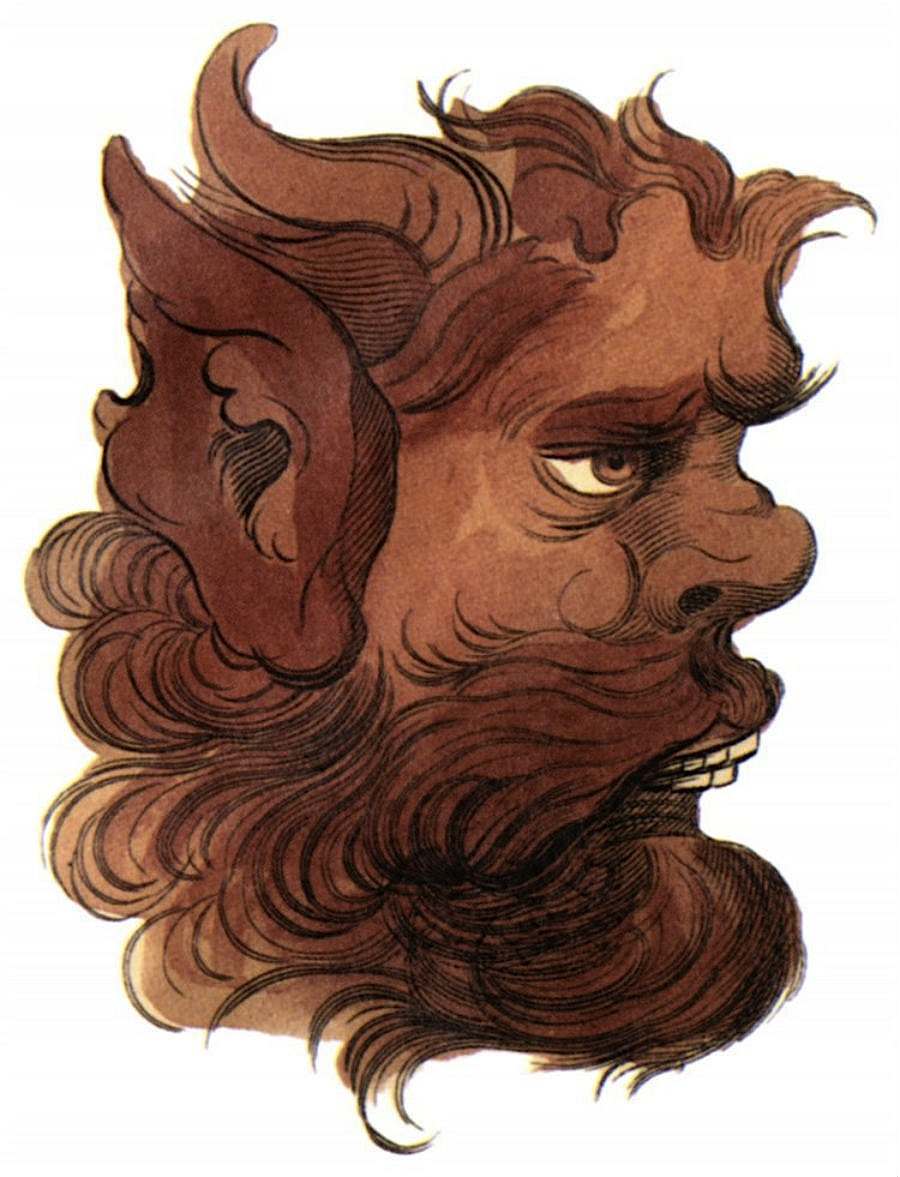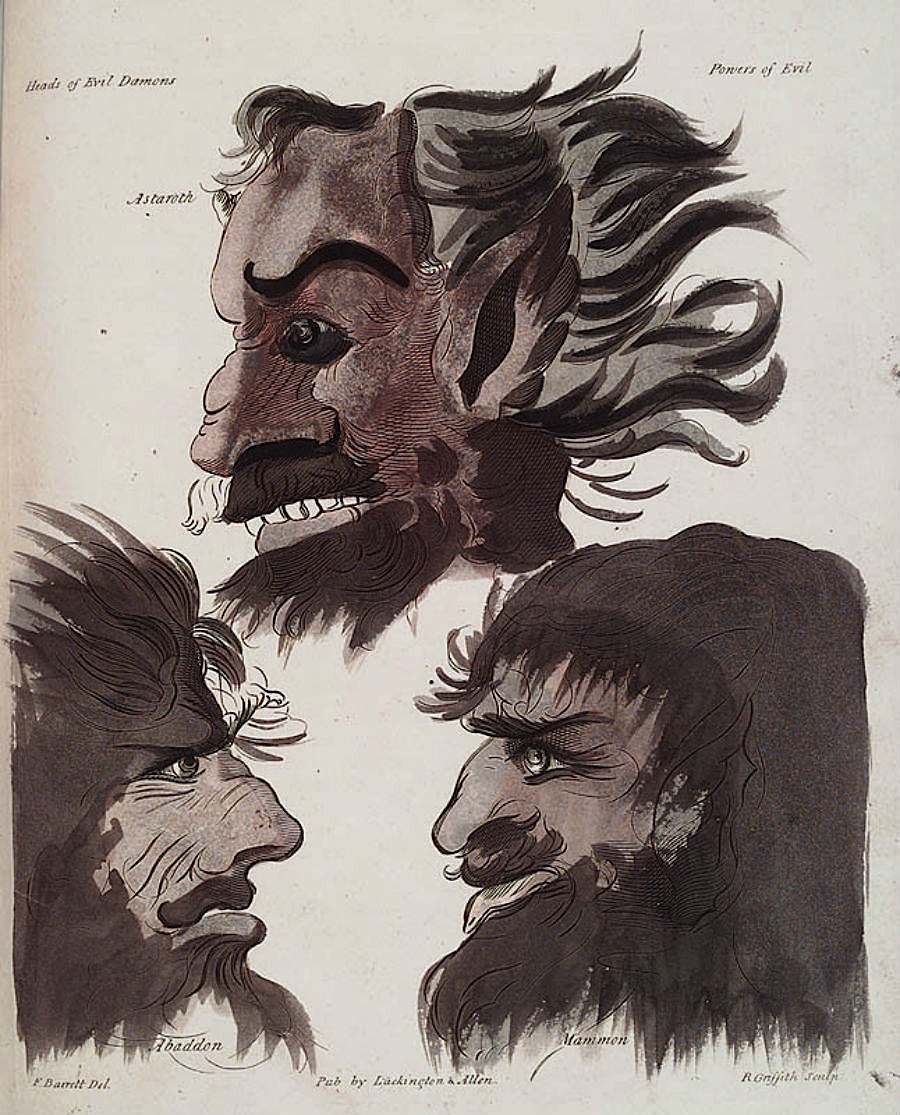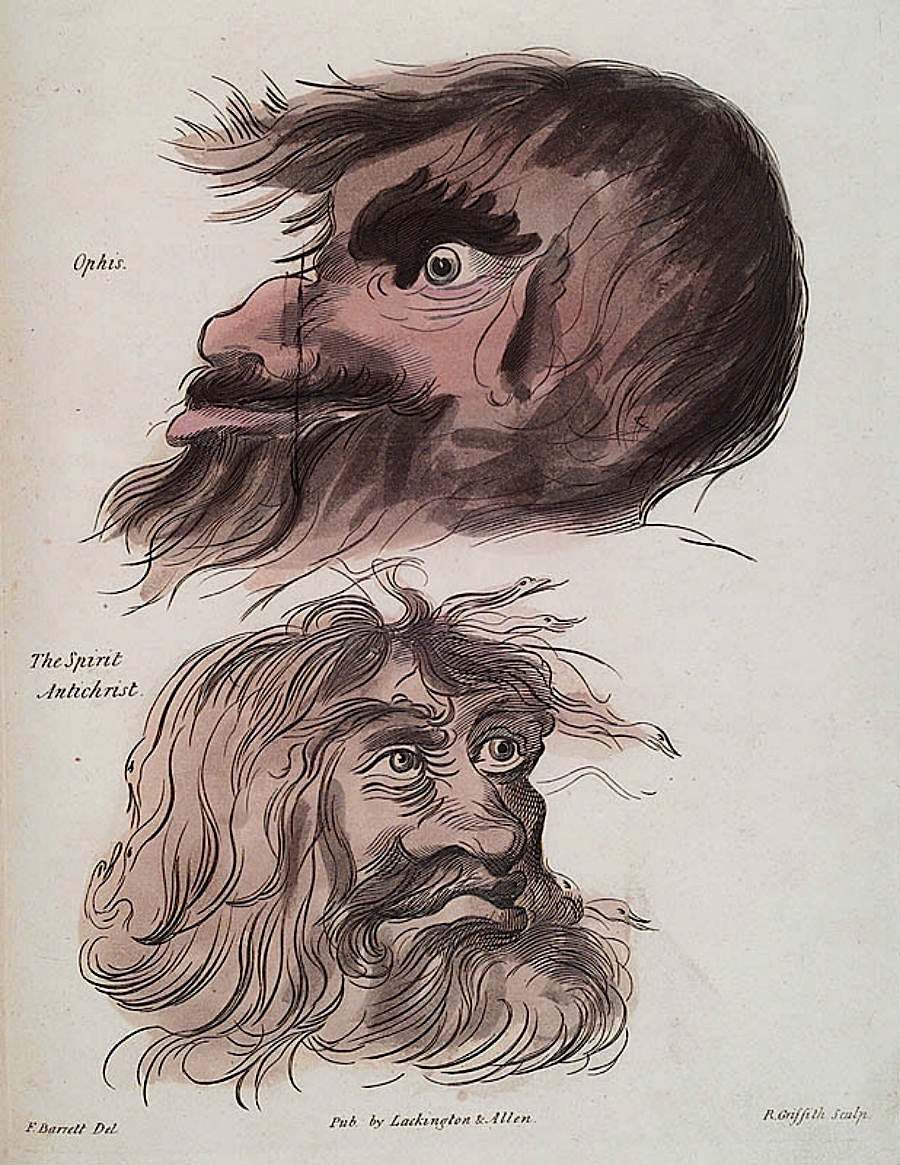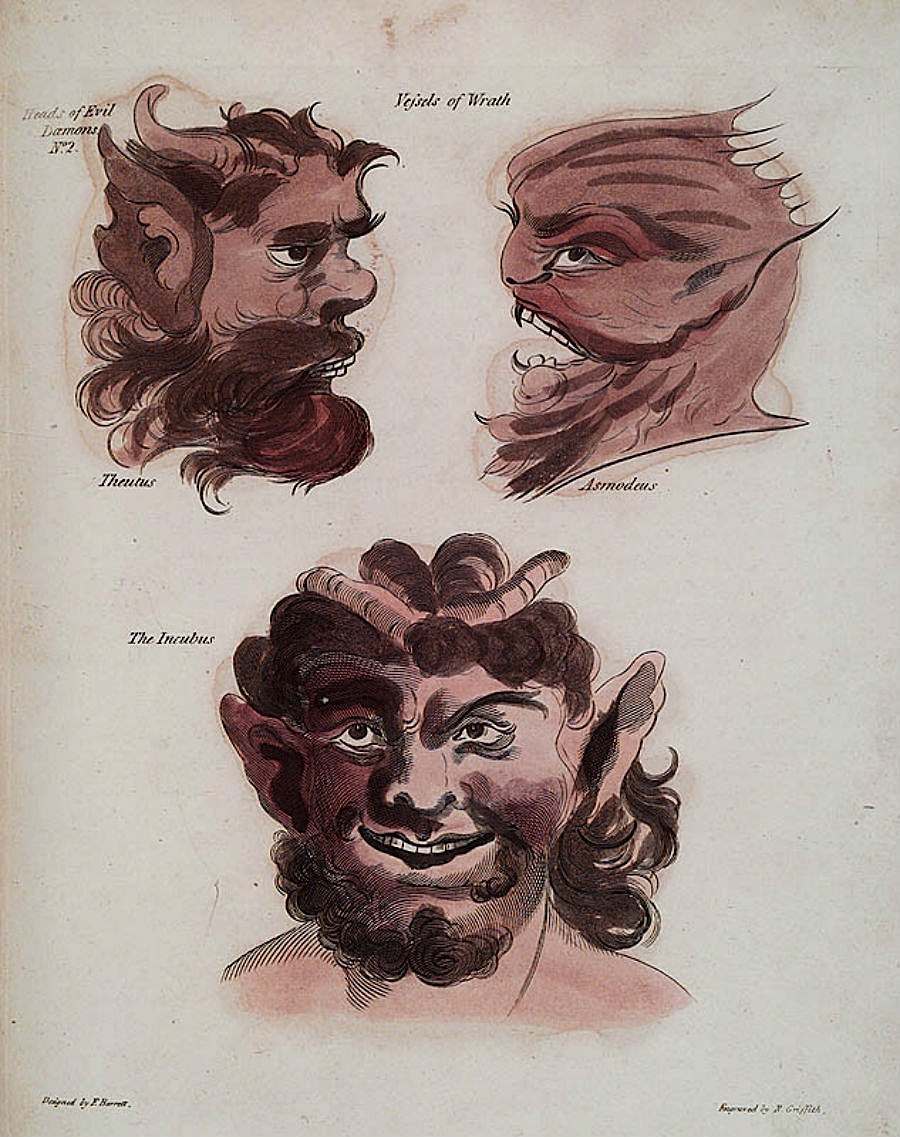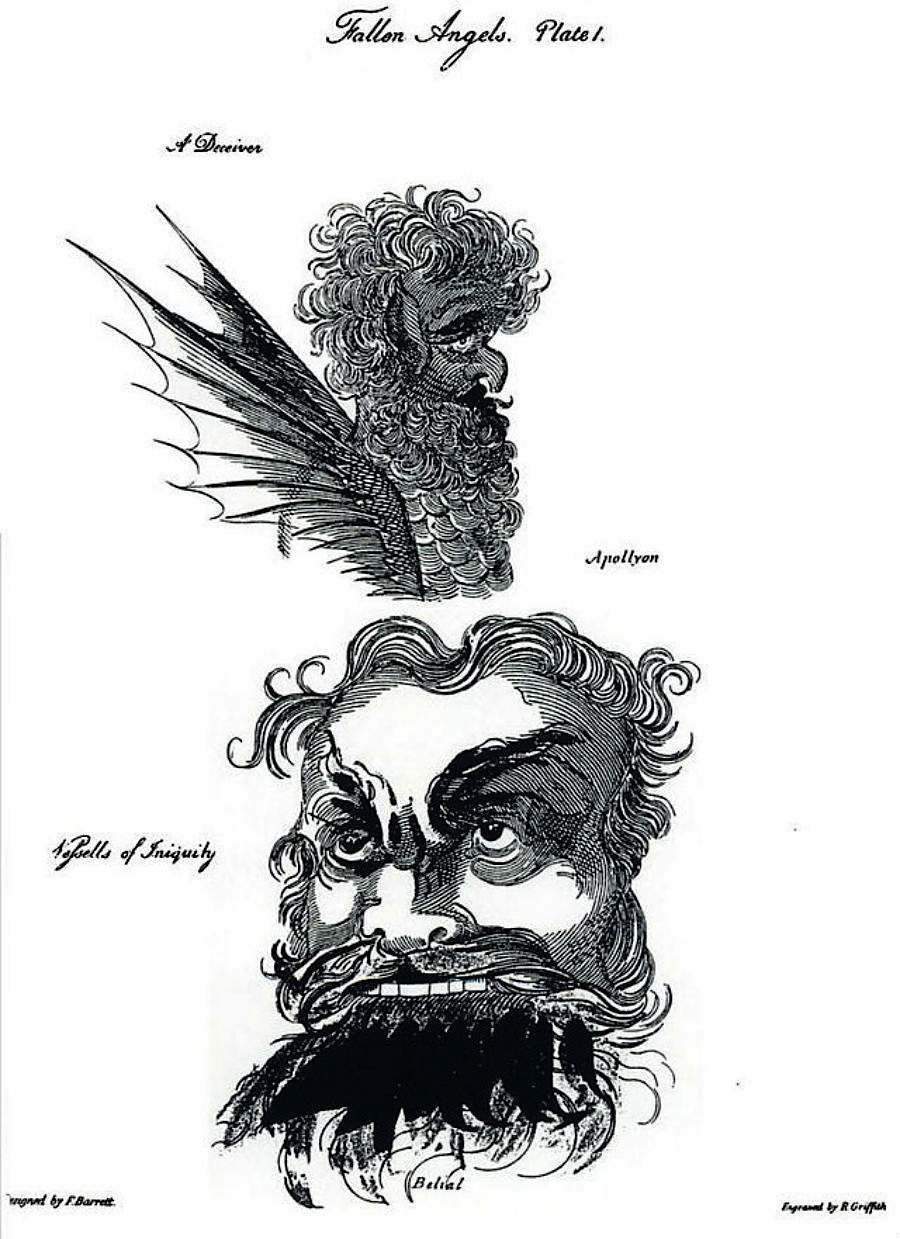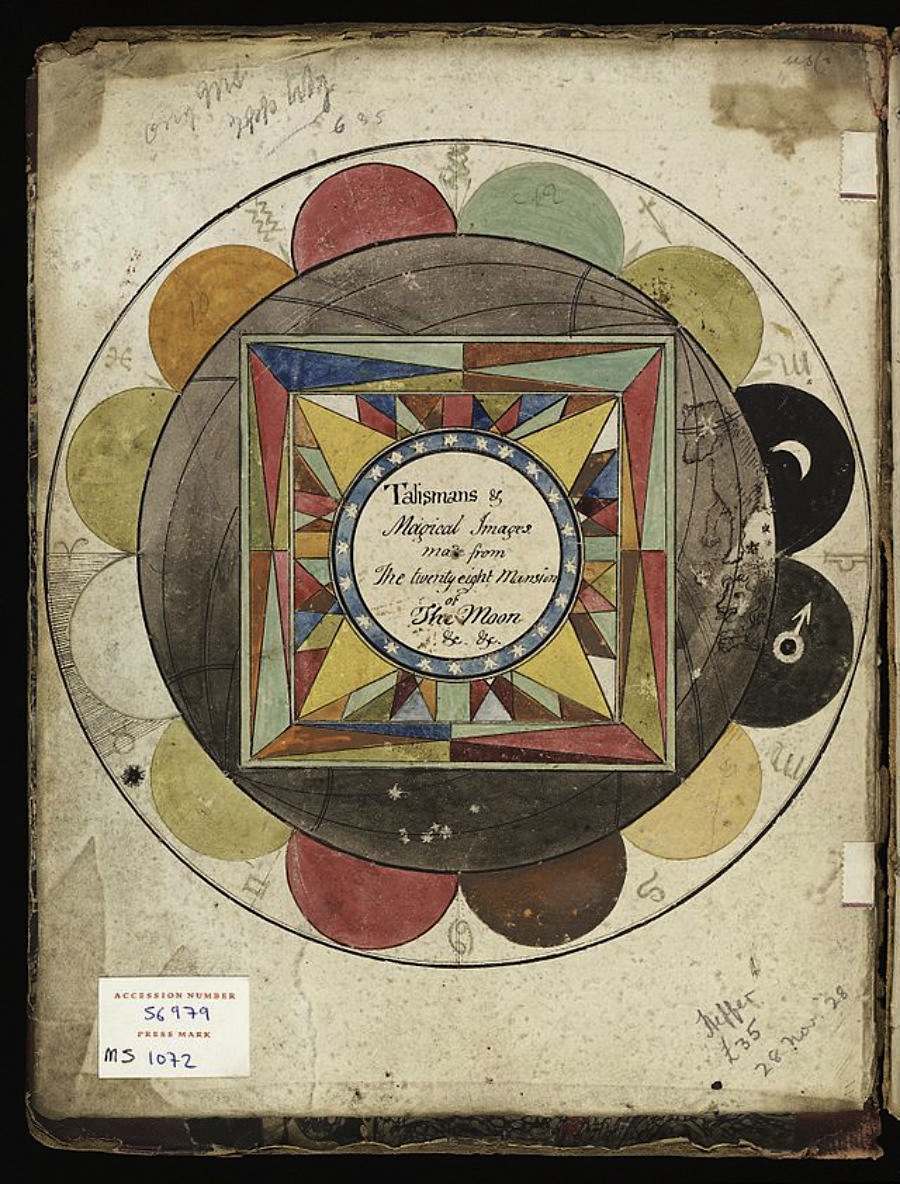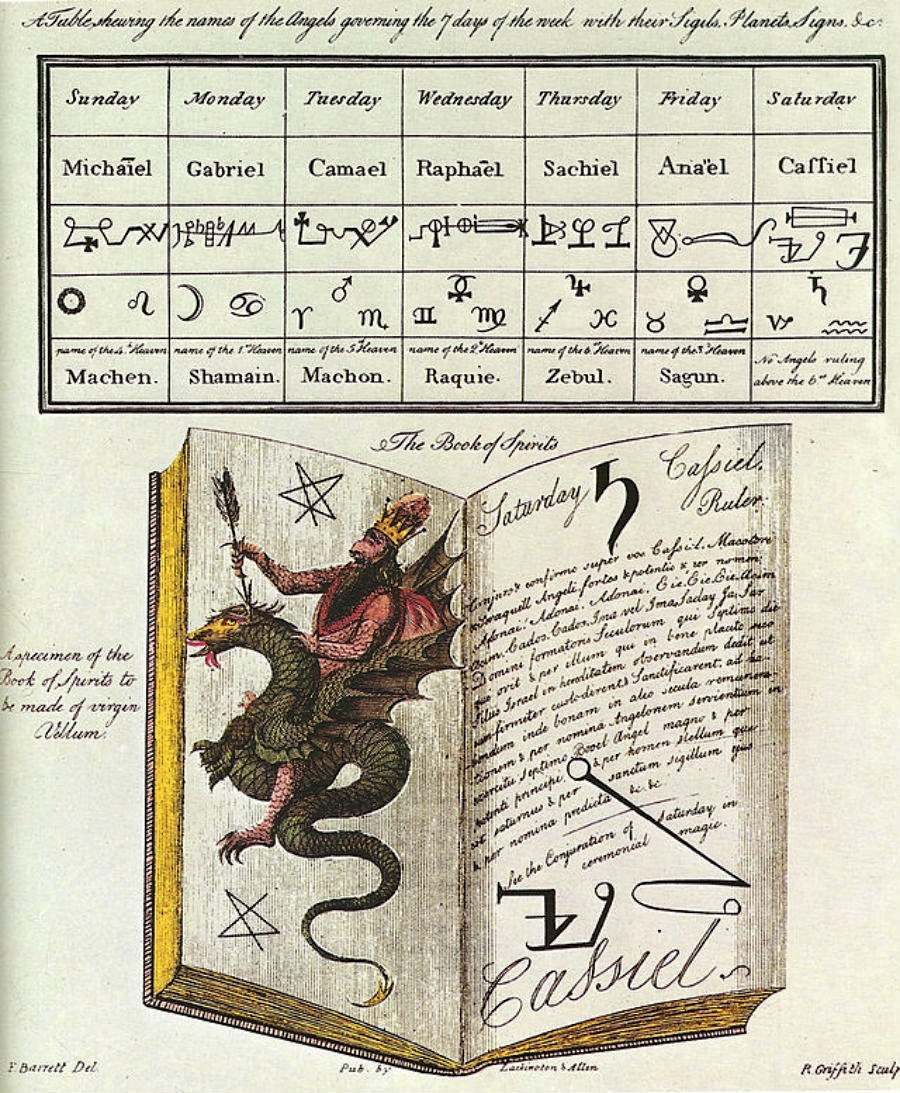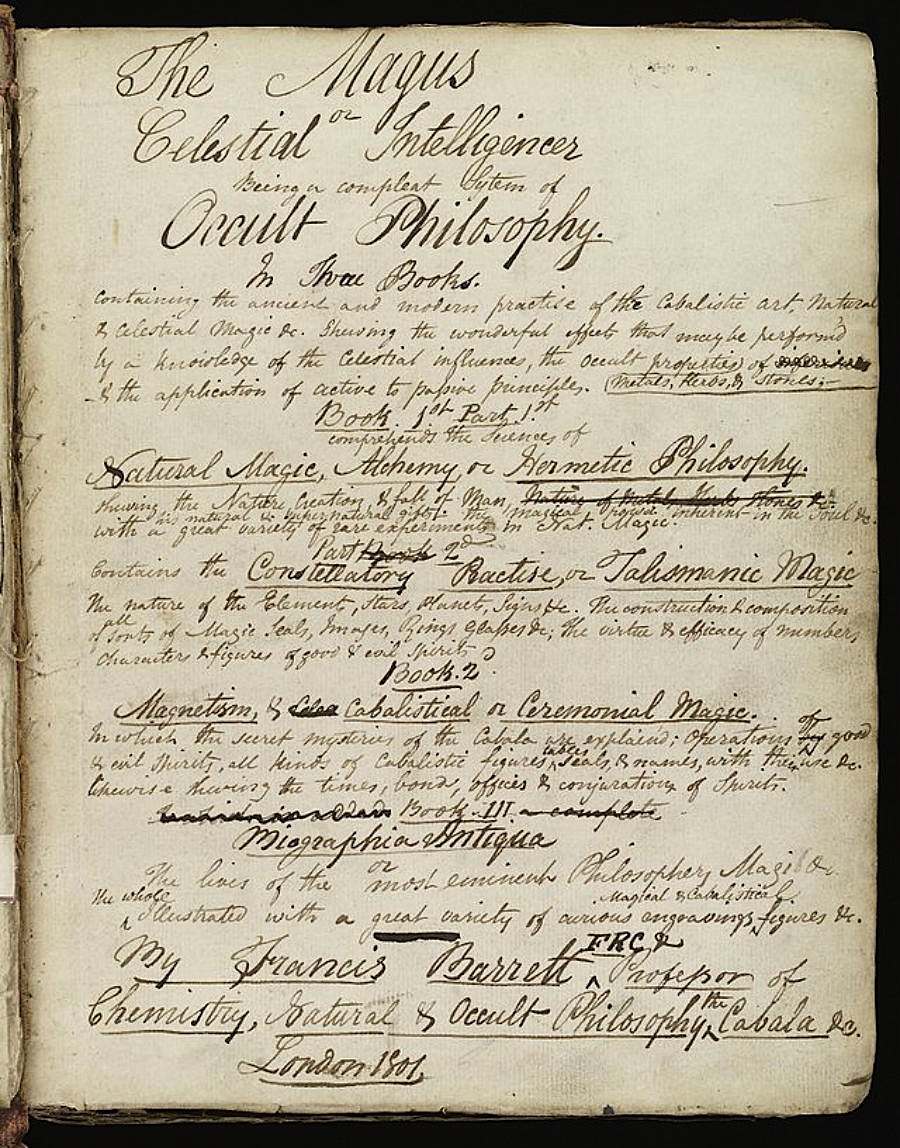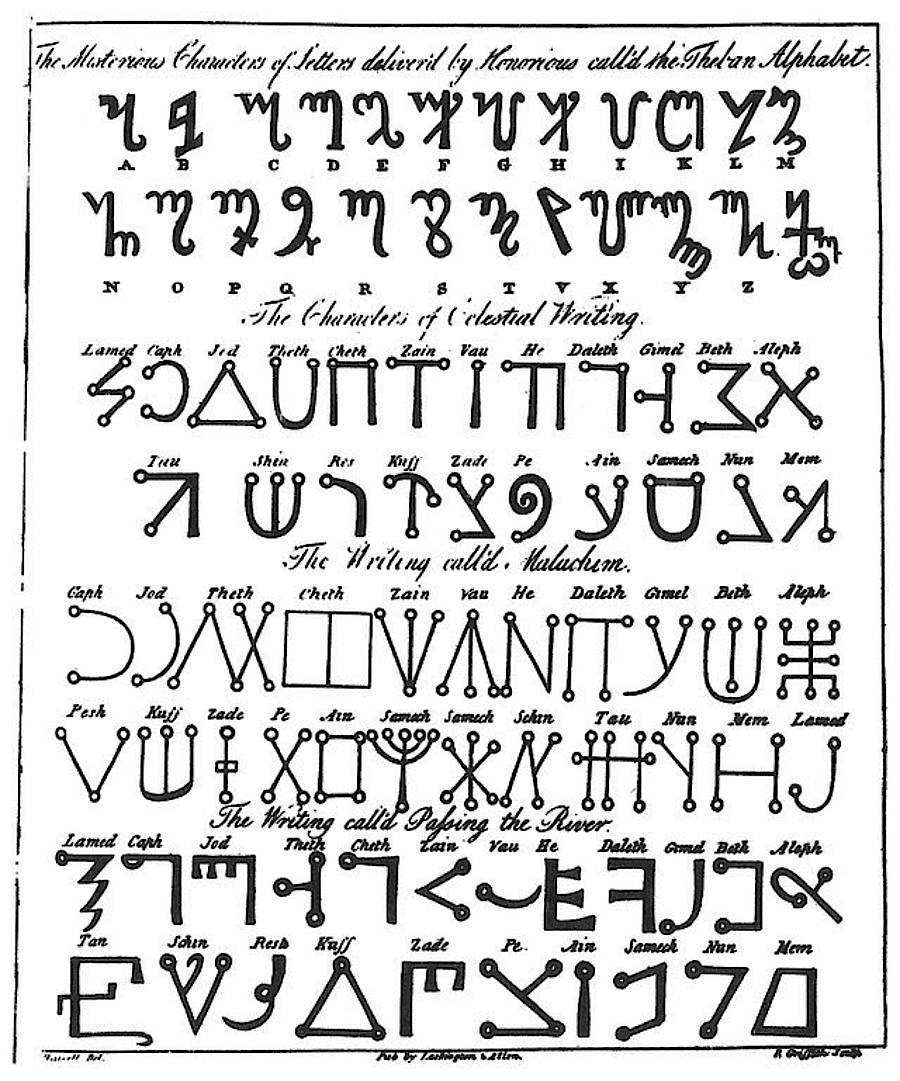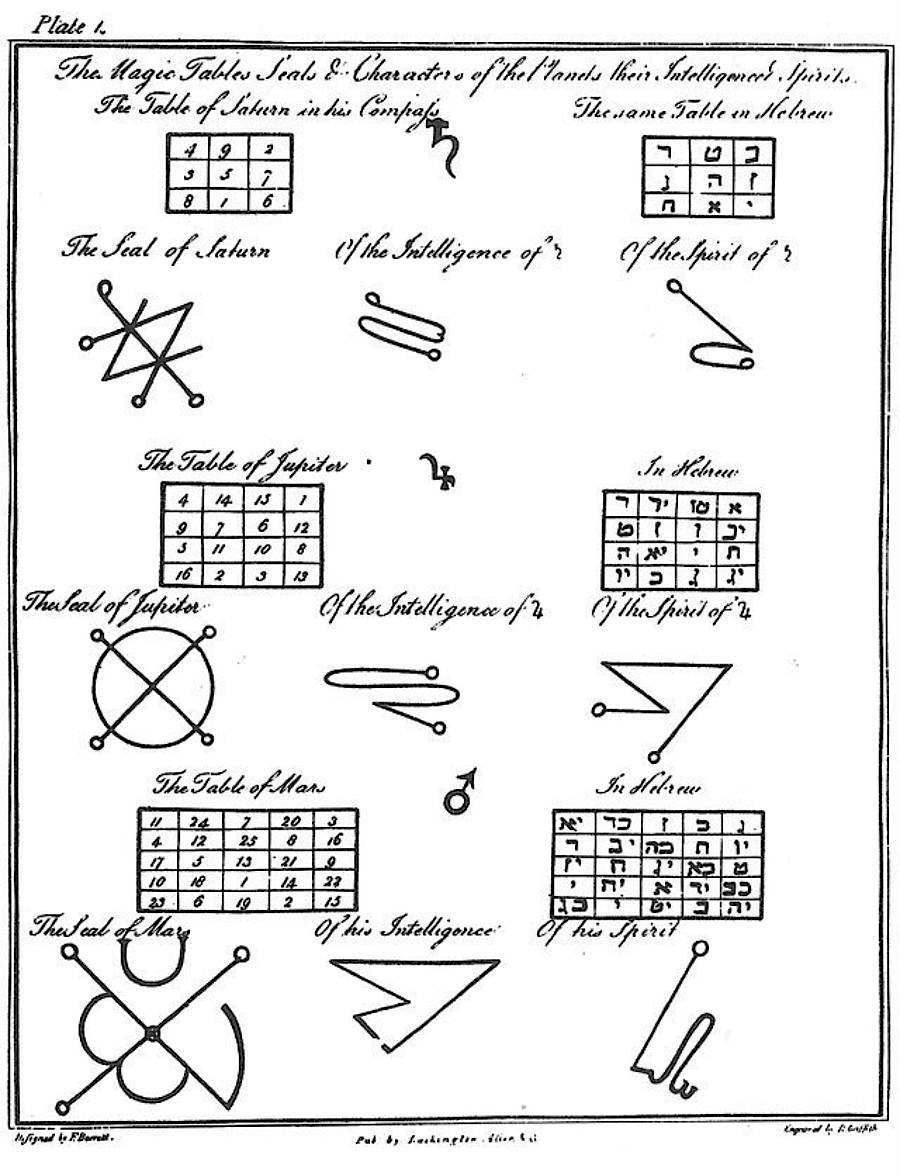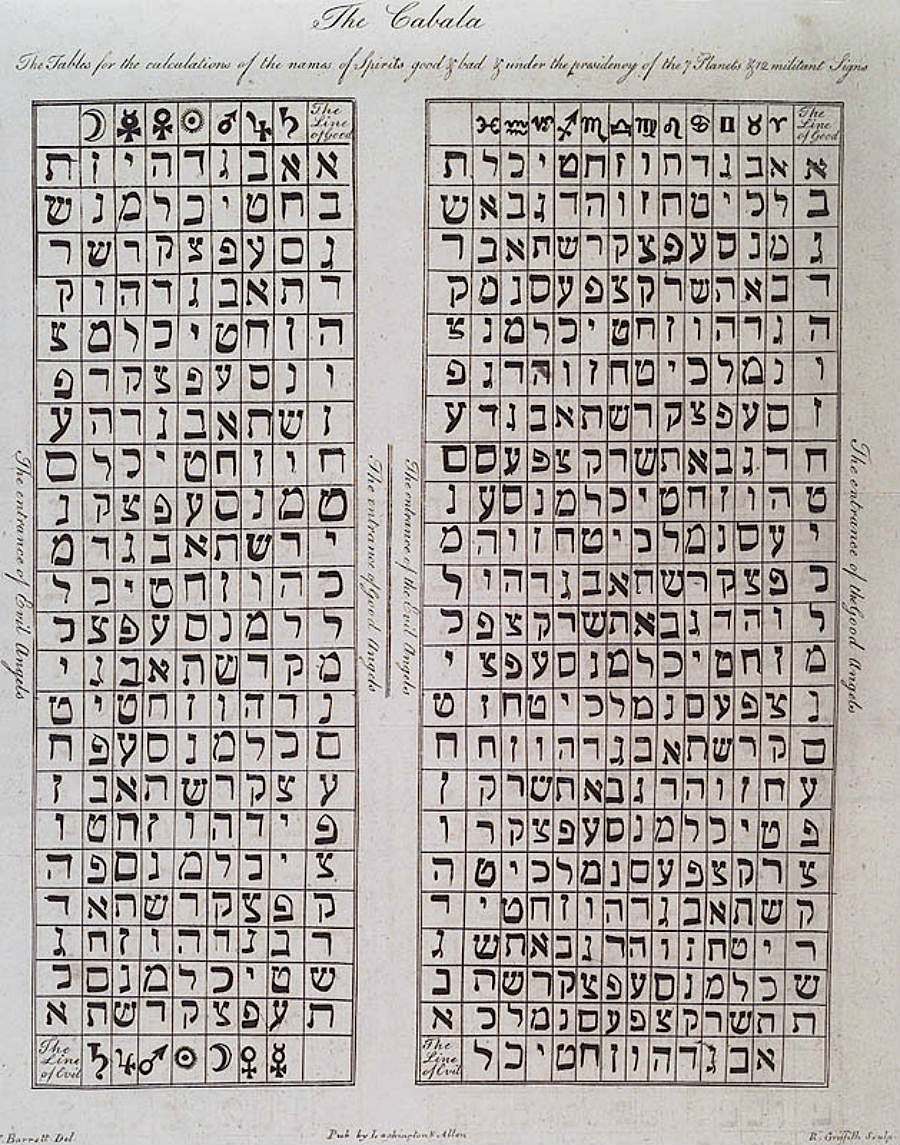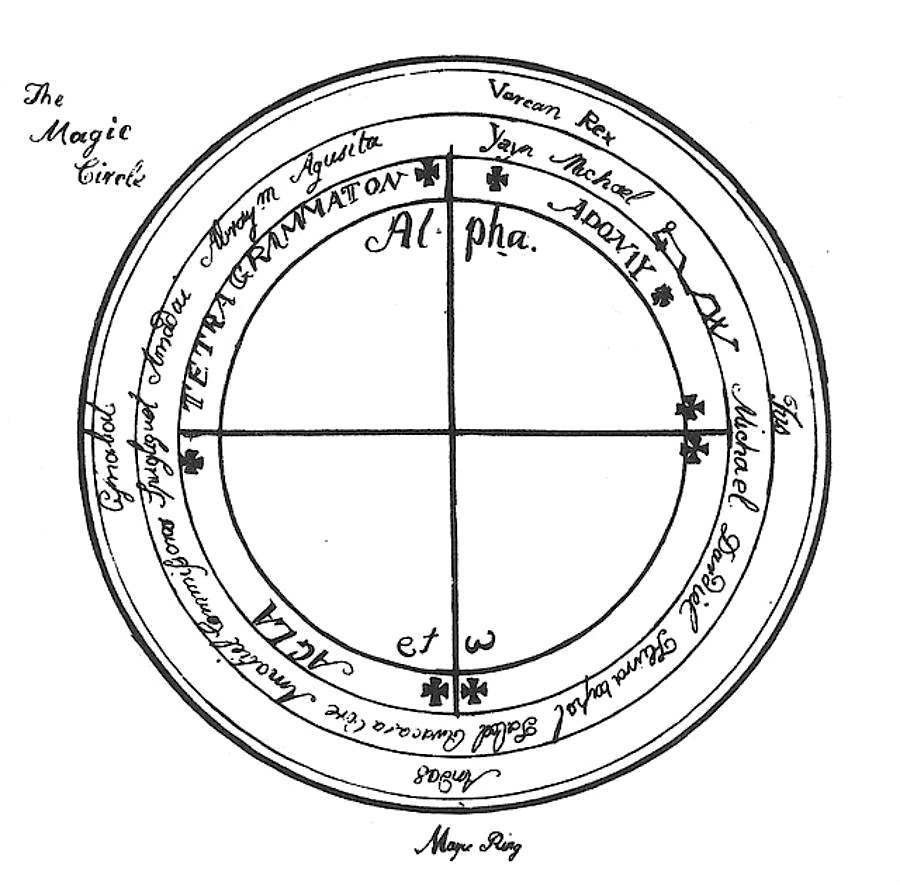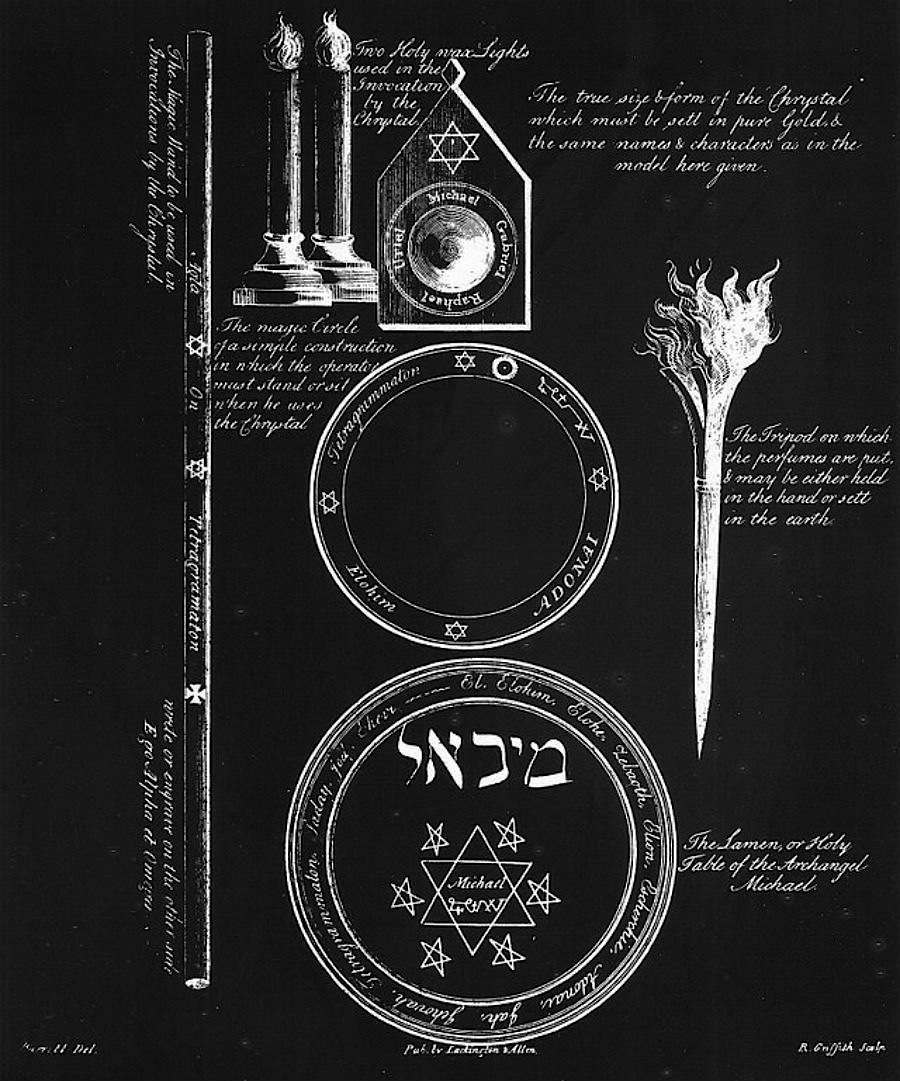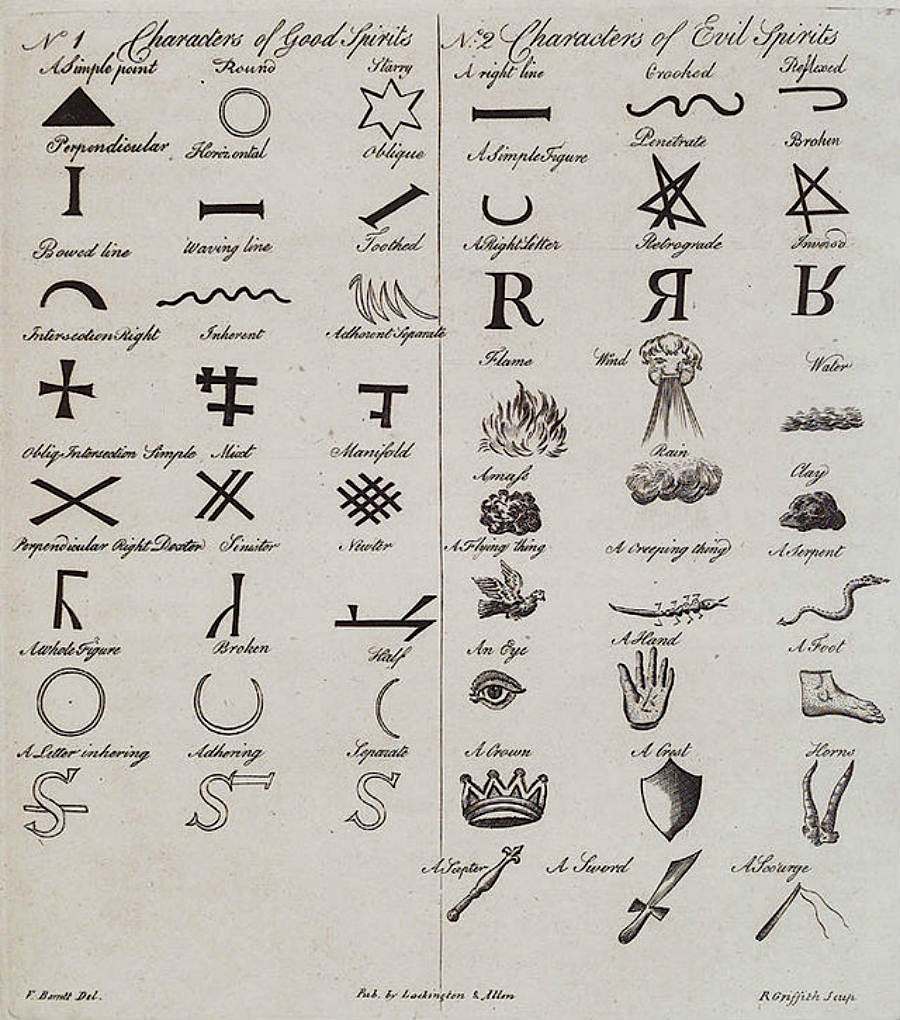Described as “one of the primary sources for the study of ceremonial magic,” Francis Barrett’s The Magus first published in 1801 was a collection of “the works of the most famous magicians, such as Zoroaster, Hermes, Apollonius, Simon of the Temple, Trithemius, Agrippa, Porta (the Neapolitan), Dee, Paracelsus, Roger Bacon, and a great many others…”
Once one of the rarest and most sought after 19th century grimoires, The Magus was primarily a compendium of occult books, in particular Three Books of Occult Philosophy and Fourth Book of Occult Philosophy by German occultist, alchemist and theologian Cornelius Agrippa, together with Italian philosopher, doctor and astrologer Peter d’Abano’s Heptameron – a book of ritual magic for conjuring angels over a seven day period. Barrett adapted these texts and included his own writings on the occult, ritual magic and rites, demonology, the Devil, an occult history, biographies of magicians, various occult notations and his drawings of angels, demons and the anti-Christ.
Francis Barrett was born in London circa 1770, and was a student of chemistry, metaphysics and natural philosophy. He hoped The Magus would rekindle interest in the occult and included an advertisement that read:
THE Author of this Work respectfully informs those who are curious in the studies of Art and Nature, especially of Natural and Occult Philosophy, Chemistry, Astrology, &c. &c. that, having been indefatigable in his researches into those sublime Sciences, of which he has treated at large in this Book, that he gives private instructions and lectures upon any of the above mentioned Sciences; in the course of which he will discover many curious and rare experiments. Those who become Students will be initiated into the choicest operations of Natural Philosophy, Natural Magic, the Cabala, Chemistry, the Talismanic Art, Hermetic Philosophy, Astrology, Physiognomy, &c. &c. Likewise they will acquire the knowledge of the Rites, Mysteries, Ceremonies, and Principles of the ancient Philosophers, Magi, Cabalists, Adepts, &c.–The purpose of this School (which will consist of no greater number than Twelve Students) being to investigate the hidden treasures of Nature; to bring the Mind to a Contemplation of the Eternal Wisdom; to promote the discovery of whatever may conduce to the perfection of Man,. the alleviating the miseries and calamities of this life, both in respect of ourselves and others; the study of morality and religion here, in order to secure to ourselves felicity hereafter; and, finally, the Promulgation of whatever may conduce to the general happiness and welfare of mankind.–Those who feel themselves thoroughly disposed to enter upon such a course of studies, as is above recited, with the same principles of philanthropy with which the Author invites the lovers of Philosophy and wisdom, to incorporate themselves in so select, permanent, and desirable a society, may speak with the Author upon the subject, tit any time between the hours of Eleven and Two o’clock, at 99 Norton Street, Mary-le-Bonne.
Letters (post paid) upon any subject treated of in this Book, will be duly answered, with the necessary information.
After its publication in 1801, The Magus caused a revival of interest in the occult and ritual magic, and was highly influential on such diverse people as the Masons, the founder of the Church of Latter Day Saints Joseph Smith, and infamous occult author and ritual magician Eliphas Levi.
A copy of The Magus can be read here.
Would you like to support Flashbak?
Please consider making a donation to our site. We don't want to rely on ads to bring you the best of visual culture. You can also support us by signing up to our Mailing List. And you can also follow us on Facebook, Instagram and Twitter. For great art and culture delivered to your door, visit our shop.
